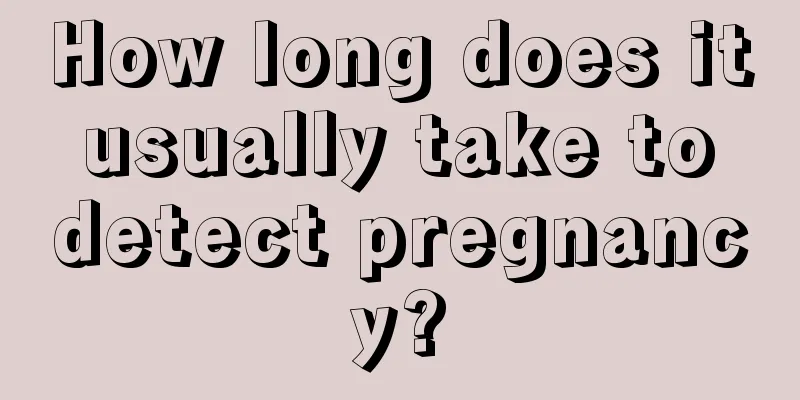What are the hazards of nuclear waste water?

|
Recently, the news that Japan decided to discharge nuclear waste into the Pacific Ocean has become the focus of everyone's attention. After all, everyone knows more or less about the power of nuclear weapons. Some experts even claim that Japan's nuclear waste water can cause "three hazards" - carcinogenicity, teratogenicity and mutagenicity. In other words, the impact on humans is very large. If this matter is really unavoidable, then how can we minimize the damage? The first thing we need to understand is what impact nuclear waste water has on human genes? First, if we follow the order, it should be based on mutagenesis, and the consequences may be carcinogenicity and teratogenicity. First, mutagenesis is the basis The nuclear radiation we often talk about is essentially a kind of radiation, which is a microscopic particle flow released when the structure or energy state of the atomic nucleus changes. These particle flows can cause other substances to ionize or excite, so they are called ionizing radiation. Therefore, nuclear radiation is essentially an ionizing radiation process. For life, there are mainly a few large molecules, which are easily attacked and changed. If it happens to fat and protein, it is actually not a big deal, because these substances themselves are products of synthesis/absorption and tend to be metabolized quickly in the body, so they will be metabolized quickly after the reaction occurs. The most troublesome thing happens to nucleic acids (DNA/RNA). Because nucleic acids are the basis of life, we can get the basic status of nucleic acids from the central dogma we are familiar with. Once nucleic acid mutates, it may cause an impact. After all, radiation may directly attack the bases on nucleic acid, causing gene mutation. If it is a neutral mutation, it is fine. After all, neutral mutation is a relatively common occurrence, and our evolution is mainly based on neutral mutation (the neutral evolution theory of Motoo Kimura is commonly seen). If it occurs in the promoter region, it may affect the efficiency of nucleic acid replication and transcription. If it occurs in the CDS region, it is very likely to cause changes in the encoded protein, etc. These changes will further manifest themselves on individuals. Secondly, teratogenicity Teratogenicity is an important effect. Individual development is very susceptible to the influence of the external environment. For example, as we all know, pregnant women cannot be exposed to X-rays because they are worried that nuclear radiation will cause fetal malformations. Similarly, many drugs are prohibited for pregnant women for the same reason. The problem is that during fetal development, every factor may produce unpredictable results. For a fetus, it is in a rapid process of developing from 1 to an individual, from a fertilized egg to billions of cells. Most of the cells in the middle will replicate and proliferate. If a cell is affected by radiation, it will replicate and pass on its offspring. This ultimately results in individual deformities. (Speaking of which, in many cases, what is innate may not be heritable, because many congenital deformities may be caused by environmental factors during pregnancy, such as radiation, drugs, etc.) Again, carcinogenic Although there are many mechanisms of carcinogenesis, it is generally believed that gene mutation still plays a fundamental role in cancer. After a gene mutation, if it is not repaired in time and is ignored by the immune system, it will eventually develop into cancer. Radiation can induce gene mutations. If the mutation caused by radiation happens to be in an important position and is not repaired or monitored by the immune system (well, one of the important mechanisms of cancer is immune escape), then it will induce cell mutations. If it further leads to unlimited amplification, it will become cancer. Of course, there are many principles of cancer, such as chromosomal mutation, protein homeostasis, etc., which may be caused by radiation. Take the Chernobyl accident, a typical example, which has become a paradigm of technological disaster. After the Chernobyl nuclear accident, areas affected by nuclear radiation showed an increasing trend in cancer, especially thyroid cancer in children, which increased from 2 cases per day to more than 100 cases in just 4 years[1]. Over the next 15 years, other health consequences also emerged. Finally, species variation I can only say that there is a certain probability. After all, radiation mutagenesis is a common breeding method. However, it is still very difficult for higher organisms to undergo large-scale mutations and form populations. However, the ocean is a huge ecosystem with many single-celled or simple organisms. There is a possibility that these organisms may mutate after being exposed to radiation. Second, how to prevent The answer is that it cannot be prevented, and you can only avoid intake as much as possible. After all, what Japan polluted was things from the sea, so if we really want to prevent it, we can only avoid ingesting things from the sea. There is no other solution. Third, dosage is a mystery To sum it up with an old saying: It is irresponsible to talk about toxicity without considering the dosage. The dosage is still the key to determining the impact of radiation. It is not impossible to discharge nuclear waste water into the sea. In fact, discharging nuclear waste water is also a common strategy. However, before discharge, treatment must be done, such as filtering, ion exchange, etc., to collect the nuclear materials in the wastewater, and then ensure that the nuclear concentration in the remaining wastewater is very low. However, the most difficult thing is that all the data on Japan's nuclear waste water is currently provided by Japan itself, and there is no reliable third-party supervision. Japan is a habitual fraudster, and TEPCO has done so repeatedly. We do not trust Japan's data. The data from the International Atomic Energy Agency is provided by the Japanese government; the United States believes the data provided by Japan; Pacific pollution is good news for Europe's Atlantic fishing. The result is that the international community cannot exert any pressure on Japan and Japan can emit with impunity. What we can do is push the IAEA to conduct independent supervision itself while retaining our claims against Japan. Williams, Dillwyn. "Cancer after nuclear fallout: lessons from the Chernobyl accident." Nature Reviews Cancer 2.7 (2002): 543-549. Note: This article is mainly about the "carcinogenic, teratogenic and mutagenic part". For more comprehensive content about nuclear waste water, please contact the editor for more information. In addition: All my answers only represent my personal views and opinions, not those of the Chinese Academy of Sciences~~~~ |
>>: Is the BYD Song a hybrid? What is the BYD Song?
Recommend
10 days pregnant, stomach pain
For expectant mothers who are just pregnant with ...
How long does it take to cook crabs before they are ready to eat? How to tell if crabs are cooked?
We all know that there are many ways to cook crab...
What to do if you have thick legs and small breasts
Ask yourself, which woman doesn't want to hav...
What are the benefits of eating pumpkin seeds for women
Let me introduce to you a kind of dried fruit - p...
Is shrimp paste a seafood? How to make shrimp paste the best?
Shrimp paste is a kind of shrimp paste product, i...
Female compatriots should not be too intimate with leggings
In late autumn, when the weather gets colder, leg...
Fingers itchy and blisters after getting manicure
Doing manicures is a relatively long process. If ...
Why do some people have no pores? They are just smaller
The simplest meaning of pore is "hole where ...
Ibuprofen for children during breastfeeding
Key reminder: Children's ibuprofen puree and ...
Can I have a breast massage while pregnant?
A woman's breasts undergo the greatest change...
When does a woman enter menopause?
Women go through many important moments in their ...
What to do if you get pregnant unexpectedly due to hypothyroidism
In life, many people suffer from hypothyroidism. ...
The fastest way to relieve back pain during menstruation
Nowadays, people are prone to back pain, either b...
The baby moves a lot when sleeping on the left side in the late pregnancy
Sleep is very important for people. About one-thi...









